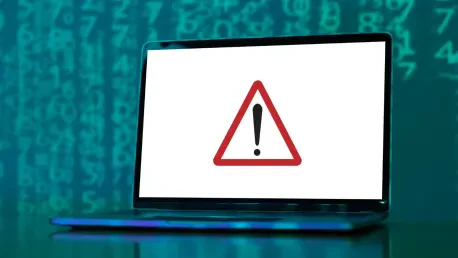In a rapidly evolving digital age where cybersecurity is paramount, a new vulnerability affecting Citrix NetScaler has set off alarms throughout the IT community. Known as CVE-2025-5777, this startling flaw hinges on inadequate input validation, providing cybercriminals with opportunities to extract session tokens, breach multifactor authentication defenses, and carry out session hijacking. This serious deficiency is particularly troubling when the NetScaler equipment is operating as a Gateway. Early stages of exploitation are reportedly already underway, igniting fears of significant ramifications that extend from financial extortion by ransomware syndicates to more sophisticated intrusions by nation-state operatives.
Historical Vulnerabilities and Comparisons
Lessons from CitrixBleed
The haunting memory of CitrixBleed, or CVE-2023-4966, looms large over today’s cybersecurity discussions. In 2023, this vulnerability led to catastrophic breaches, with major corporations such as Boeing and Comcast among those riddled by attacks that compromised the data of millions. Despite concerted efforts to patch this flaw, malicious actors like the ransomware group LockBit 3.0 continued to exploit it, underscoring the relentless persistence and adaptability of cyber adversaries. The cyber community’s concern now focuses sharply on whether CVE-2025-5777 might usher in a new wave of infrastructure vulnerabilities reminiscent of CitrixBleed’s disruptive nature.
Much can be gleaned from examining CitrixBleed’s trajectory, particularly the insufficient communication and delayed response that compounded its effects. The psychological toll of constantly looming cybersecurity threats presses businesses and governments alike to maintain unwavering vigilance. The current environment demands that enterprises invest in both technological improvements and strategic foresight to preemptively mitigate such vulnerabilities. Industry stakeholders must prioritize fostering transparency and collaboration among information security professionals and their partners to combat these sophisticated threats.
Impact on the Cybersecurity Landscape
In the face of this looming threat, the potential consequences of CVE-2025-5777 are being scrutinized as they could significantly reshape the cybersecurity landscape. The specter of financially motivated attackers, ransomware entities, and geopolitical actors exploiting these opportunities has led to an urgent reassessment of global cyber protocols. The interconnectedness of global information systems renders any vulnerability in critical software a shared risk. Therefore, the emphasis has shifted towards holistic security strategies, combining advanced technological defenses with robust awareness and education programs.
Organizations face a growing imperative to implement agile security measures capable of adapting to the evolving threat landscape. Leveraging cutting-edge technologies like artificial intelligence and machine learning is becoming increasingly essential to anticipating attack vectors before they manifest in detrimental ways. Collaborative initiatives that span the public and private sectors are proving vital in creating responsive, adaptive mechanisms that support a safer digital future. The synergistic effort to address vulnerabilities underscores the deep interdependency of the global cybersecurity infrastructure.
Corporate Response and Proactive Measures
Citrix’s Approach to Transparency and Communication
Citrix, under the umbrella of Cloud Software Group, has pledged to enhance its approach to transparency in light of past critiques during the CitrixBleed incident. Acknowledging the inadequacies in past communication efforts, the company has committed to releasing comprehensive advisories concerning both CVE-2025-5777 and a concurrently disclosed zero-day vulnerability labeled CVE-2025-6543. While the latter has confirmed active exploitation, the former remains under scrutiny with a promise of regular updates and a dedication to clarity.
To assist clients in navigating this perilous landscape, Citrix has made a detailed FAQ available for security teams. This move intends to equip businesses with the knowledge required to avert possible security breaches, ensuring they are actively engaged in fortifying their defenses. This proactive stance reflects a broader industry trend where timely and direct communication is recognized as fundamental to effective cybersecurity governance. Firms managing critical software infrastructures are directed towards enhancing their dialogue mechanisms to reinforce trust with customers and stakeholders in increasingly uncertain times.
Strengthening Cybersecurity Measures
In the quest to mitigate the fallout from potential exploits, a call to action for developing industry-standard cybersecurity protocols gains traction. Acknowledging both present and emerging threats, organizations are being urged to implement and maintain rigorous patch management processes. The rapid deployment of patches, along with stringent testing and validation processes, can significantly reduce the window of opportunity for cybercriminals to infiltrate systems. Additionally, nurturing an organizational culture steeped in cybersecurity awareness serves to bolster the human element of defense strategies.
The establishment of comprehensive incident response plans, supplemented by continuous training and assessment, has become indispensable in navigating the volatile cyber environment. Stakeholders in the software industry are prompted to expand their focus from merely reactive stances to proactive initiatives that preempt future crises. This shift towards a culture of anticipatory cybersecurity bolsters both corporate resilience and end-user safety. As defenders strive to stay ahead of adversaries, fostering robust partnerships and knowledge sharing will be key to achieving sustainable security outcomes.
A Path Forward in Cybersecurity
In today’s fast-paced digital landscape where cybersecurity plays a crucial role, a new vulnerability in Citrix NetScaler has raised significant concern within the IT realm. This flaw, identified as CVE-2025-5777, is rooted in inadequate input validation. It allows cybercriminals to potentially extract session tokens, bypass multifactor authentication systems, and engage in session hijacking, making the vulnerability particularly worrisome when NetScaler functions as a Gateway. Reports indicate that the early stages of exploitation have already commenced, raising alarms about the possible significant consequences. These could range from financial extortion by ransomware groups to more complex attacks orchestrated by nation-states. Security experts are increasingly concerned about protecting sensitive data and the integrity of organizations reliant on Citrix NetScaler. The urgency to address this flaw is immediate, as the potential for widespread damage emphasizes the critical need for resilient cybersecurity measures in an ever-evolving threat landscape.









